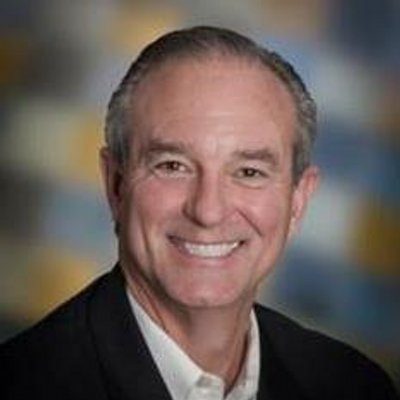 With the Empire State Building glowing in the background, I wondered what was on my own horizon that evening. The cocktail party in a chic midtown hotel had just begun, the award-winning CMOs were pouring in and my curiosity was starting to peak. Who were these people? Sure I could read their name badges but what were their stories and more importantly, would I have time to discover them in between the chit chat?
With the Empire State Building glowing in the background, I wondered what was on my own horizon that evening. The cocktail party in a chic midtown hotel had just begun, the award-winning CMOs were pouring in and my curiosity was starting to peak. Who were these people? Sure I could read their name badges but what were their stories and more importantly, would I have time to discover them in between the chit chat?
Shortly thereafter I met Paul Hillen, CMO of what turns out to be the largest privately held company in the US, Cargill. As Paul told me about this global agricultural powerhouse, I became more and more intrigued, especially at it relates to their abundant CSR activities. So, of course, I followed up with Paul.
These days, one expects global companies to have a reasonable amount of charitable activities and to show some level of environmental responsibility. What I didn’t expect is that in addition to things like building 75 schools in developing nations, Cargill became so well versed in Responsible Supply Chain Management that they turned this into a service they offered their clients. You’ll find that surprise and others in our comprehensive interview below. Cheers.
Drew: What is your overall approach to corporate social responsibility?
I am a big proponent that whether it’s philanthropic, an investment in a community or a partnership that it is all an extension of your business strategy. It’s just like branding. If branding and marketing are not an extension of the overall business strategy, then they are probably doomed. And so when approach CSR programs, I start by asking what are the things that we can do where we operate that are linked to good business? And the first answer to that has to be a direction extension of your business strategy and how CSR can continue to deliver on the expectations that our board and our shareholders have in terms of the growth of the company.
Drew: As a private company, a lot of folks are unaware of the size and scope of Cargill. Can you talk about that a bit and how it impacts your CSR activities?
We have over 2,000 locations with operations in over 70 countries around the world. And in many of those places, we tend to be one of the top employers, thus our presence in each community is critical. The reason we’ve invested in those communities is so that we can maintain a great workforce, as well as help educate and nurture a future workforce. I was recently in Côte d’Ivoire in Africa and I visited four different village where we had built schools and helped drill wells because those are two of the biggest issues that have there–clean water so that they don’t have dysentery and educating kids so they have something beneficial to do during the day (and not become part of the child labor workforce). We’re going to be opening our 75th school in Vietnam for similar reasons. So for us, corporate social responsibility is about improving people’s lives and doing it in a way that is directly linked to the business.
Drew: Could you talk about a specific CSR program that you feel is really representative of the kind of initiatives that work for Cargill and your constituents?
Sure. It’s built around sustainability and responsible supply chain management, which is one of our core competencies. We’ve created a tool in partnership with PwC [PricewaterhouseCoopers] called the Cargill Responsible Supply Chain Framework. This program is unique in that it helps our customers in three ways:
- We work with our customers to help then take costs of their supply chains identifying where they can do things more sustainably and hopefully reduce costs in the process;
- We identify areas in which the customer is already doing things in a sustainable manner enabling them to take some credit where credit is in fact due;
- We help them take some of the risk out of their supply chain by identifying non-sustainable practices that should be addressed.
All of these things help our customers to build their businesses in a more social responsible way and helps us as this a fee-for-service business. So we turned “responsible supply chains” into not just a nice phrase but also a service that we provide to our customers.
Drew: That’s really interesting in and of itself. How did you know that you had that expertise in the first place? I mean, how did you develop a sustainability practice such that you could actually not only educate your customers but also create a service that you could sell them?
Well, it’s a model actually that we’ve done for years. We are celebrating our 150th anniversary this year, and this has given me an opportunity to really learn a lot more about the heritage of the company, and a lot of our businesses were born this way. We take capabilities that we’re really good at, and then we say, hey, we could turn this into a business because if we’ve got this need, then so do our customers. We’ve been doing supply chains for 150 years. It started when our founder in Iowa opened a grain warehouse because it was all about helping farmers to get their grains to market in a more efficient way. Instead of everybody doing it on their own, W.W. Cargill built it. We understand most supply chains around the world because we have an ocean transportation business, we’re one of the largest users of railcars, we understand the trade flows and the flow of goods, and then we understand it more at the micro level. We understand exactly what the supply chain is. Planting a soybean all the way until it’s bottled and branded by one of our customers as an example. Or in other parts of the world, we bottle our own — we have our own consumer brands. So it really is a core competency of ours, and we are now extending that to our customers.
Drew: One of the big reasons that companies talk about CSR is because it makes employees feel better about working at the company. How do employees get involved in Cargill programs and how important is that to retention?
Yes, employee involvement is very important. First of all we give employees credit for and ask them to track all of their time regarding time, talent and treasure that they contribute to their communities. Our food scientists actually created the highly nutritious recipes for the pre-packed meals that are sent to Africa for Feed My Starving Children. One of the things that we did in conjunction with our 150th Anniversary was to involve employees in “learning journeys.” Two years ago, we did one on Brazil. In 2015, we did one in Africa and another one in China, where we get all of the different stakeholders who are interested in important issues like hunger and sustainability, and we have them live together for a week.
Drew: Has your past life at P&G had an impact on your approach to CSR?
One of the things that I think might be different with me, relative to other CMOs is that I had P&L responsibility as a business leader for seven of my fifteen years at P&G and many of my 14 years at Cargill. I’ve only been in this current role for about four years and try very hard to avoid using the typical marketing clichés like “doing good is good business.” My background has trained me to think of CSR in the context of other efforts making sure they are directly linked to the business strategy and the P&L.
Drew: What is Cargill’s purpose and how does this impact your CSR activity?
Our aspiration is to be the global leader in nourishing people; that’s our stated corporate purpose. So most of our CSR efforts are built around nourishing people. As an example, we have a very strong partnership with CARE, not only do we donate significant contributions to them but also our employees are heavily involved on a local level.
Drew: How does your brand purpose translate into marketing messages?
It all extends from our purpose to be the global leader in nourishing people while translating into a more specific brand promise – helping you, the stakeholder, be more successful with Cargill than with anyone else. And it’s based on how the stakeholder defines success. Then that leads to our brand expression – Thrive. Our commitment to helping stakeholders thrive (the highest level of success) works on many levels. For example, if you do a public-private partnership with Cargill to develop a village, to develop schools, to drill wells, to do water filtration systems, we believe that you’ll have the best chance of thriving. I chose Thrive because it works with our purpose–if you’re not well nourished, you can’t be successful and because it supports a broad range of initiatives across our many business units and countries of operation.
Drew: How do you measure the effectiveness of this program? As a truly global company, do you have a global brand health tracking in place?
From my P&G experience, I really like to conduct brand health research and when we couldn’t find an existing template, we built our own. In the fall of 2013, right before we launched our new brand promise and brand expression, we fielded the first survey wave in 22 countries among all nine of our stakeholder groups. By the way, this was the first time ever in the history of Cargill that we’ve had a single brand promise and a single brand expression in all 196 countries where we do business. We picked the 22 countries (now 24) because it represents about 80 percent of our business. That was our baseline and now, two years later we’re in the middle of a second wave of tracking to see if we’ve moved the needle, to see if we actually own the brand promise and to what degree against our nine stakeholder groups. We also work with the 66 individual business units to identify their top three or four stakeholders that are critical to building their business help them with their own brand and reputation studies locally.
Drew: What’s on your to do list?
We have to now improve awareness of what we do, and why people would partner with us because in a world where you can’t hide anything, you better have nothing to hide, right? So we have to do a much better job of defining who we are because if we don’t tell our story, somebody else will, and it’s probably not going to be accurate.
